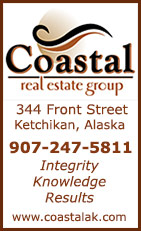|
Fish Factor Some ups, mostly downs for salmon permit values; Virtual meetings galore!By LAINE WELCH November 03, 2020
Permit values are derived by the state Commercial Fisheries Entry Commission based on the average value of four permit sales. One of the uppers is the bellwether fishery at Bristol Bay where driftnet permits are showing good gains after a strong fishing season, despite a disappointing base sockeye price of $.70 a pound, down by nearly half from last year. “Probably the lowest asking price out there right now is $170,000,” said Doug Bowen of Alaska Boats and Permits in Homer. “Of course, the next big news here for the Bay would be the forecasts for next year which are not out yet, and they could certainly have an influence on what people are willing to pay for those permits. But they have come up considerably from the low of $150,000 before the season.” Alaskan Quota and Permits in Petersburg lists one Bristol Bay permit at $195,000, while Dock Street Brokers has new drift listings at between $170,000 and $180,000. Kodiak was a bright spot for salmon seiners who caught an unexpected surge of more than 21 million pinks. That helped boost permit values for the first time in years. “Before the season, those Kodiak seine permits were probably worth around $35,000. In recent sales, they've ticked up to around $38,000 and we have them available on the market now at $40,000. So they've trended up a bit.” Permit Master shows Kodiak seine cards listed between $36,000-$40,000, and $45,000 at Dock Street. Elsewhere in Alaska, other salmon permit values have declined since last spring. At Cook Inlet, yet another lousy season has pushed down the value to the $20,000 range, the lowest since farmed salmon caused a crash decades ago. “Those Cook Inlet drift permits got up to as high as $240,000 or $250,000 at the high water mark, and then when farmed salmon came along in the late 1980s and early ‘90s, the entire salmon industry crashed and the permit values dropped by 90% or more. I remember selling Cook Inlet drifts for $10,000 at the bottom,” Bowen said. The Copper River drift fishery this year also was a wash. “The fish just did not show up on the flats there. Before the season those permits were around $140,000 give or take, and recent sales are around $105,000,” he said. “They've dropped a lot and there's not much movement there. Nobody wants to sell at those low prices.” Prince William Sound seiners did better in their fisheries, but those permit values also have taken a dip from $140,000-$145,000 before the season. “You could probably pick one up for $130,000 now,” Bowen said. At Southeast Alaska, where a disaster has been declared after one of the worst seasons in more than 40 years, salmon permit values reflect the decline. “The market for drift and seine permits is about flat with very little interest or movement in those Southeast permits,” Bowen said. “Before the season, you could have picked up a drift permit for $70,000. The lowest asking price out there now is probably $67,000 so I would imagine you could pick one up for somewhere in the $60,000 range. In the spring of last year, Southeast seine permits were around $250,000; the asking price now is $175,000.” Nowhere in Alaska has a salmon permit value dropped more than at Chignik, once the most exclusive in the state. “They were probably the most expensive salmon permit on the market for a while at about a half a million dollars. There has been absolutely no activity in that Chignik seine permit market and the lowest asking price is probably about $90,000. But there is zero interest there,” Bowen added. Permit values at Area M (False Pass) also show little interest after a lousy season with no sales post-season. “We have a permit listed at $185,000 and an offer of $140,000,” he added. Despite the downturns, Bowen said most people are still optimistic about Alaska’s iconic fishery and boat sales are brisk. “You have to be willing to take a risk to plunk down a big chunk of cash for a boat in these times with so much uncertainty, but our boat sales are doing great,” he said. “I don't think anything demonstrates confidence in the industry as much as buying a boat. It's a huge investment and people are making them.” Expos and All Hands: The coronavirus has derailed face to face fish gatherings and forced them to online venues, and there’s a fishing industry dream of a lineup for this month. One perk of “going virtual” is that more people can tune in to all kinds of meetings, discussions and workshops no matter where they call home. That will hopefully be the case at the Fishermen’s Fall Expo at Sitkaon November 11 and 12 hosted by the Alaska Longline Fishermen's Association and the Alaska Sustainable Fisheries Trust. “Usually, it's Sitka fishermen and women that come in and get to participate in these trainings and workshops. But this year, we're hoping to have a broader scope of folks throughout the region and the state and maybe beyond, too. We’ve got quite a lineup and yes, it is a bit pot heavy,” said Natalie Sattler, program coordinator, with a laugh. Sattler is referring to the new lightweight, coiled pots that prevent whales from robbing black cod catches and are changing the game, especially for smaller boats. Manufacturers will be on hand with demonstrations; others will show how to set up boat decks and hydraulics for longliners who are interested in switching to the whale-proof pots. The new gear could lead to new fishing regulations and Sattler said a forum will discuss potential changes. “We want to help both hook and line and pot boats really coexist on the grounds and ensure that small boats continue to have a viable future in the sablefish fishery,” she said. Also in the lineup: updates on local mariculture, vessel energy efficiency, hybrid technology, management 101, and fishermen’s ergonomics. “How to take care of your body when you’re fishing to prevent certain injuries,” Sattler explained. “So that'll be kind of fun to get folks up and moving in the comfort of their own homes.” Sign up for free at www.alfafish.org/ Get the latest updates on nearly every Alaska fish in the sea at the popular All Hands on Deck virtual meetings set for November 10-13 by the Alaska Seafood Marketing Institute. Each day will focus on marketing strategies and challenges for the fish and shellfish ASMI promotes in the U.S. and around the world. ASMI’s mission is to increase the economic value and awareness of the Alaska seafood resource and that's a really big lift,” said Ashley Heimbigner, ASMI communications director. “And we couldn't do it without the input and guidance and ‘on the ground’ information we get from all of our industry partners and stakeholders.” The All Hands lineup features the latest industry economic indicators presented by the McDowell Group, including Covid impacts around the world, trade disputes, and a roundtable forum with experts from the global seafood supply chain. Every fish and shellfish species gets its own session, Heimbigner said. “If you were to pop in to a crab species committee meeting, you might hear them discussing an overview of stock assessments in specific regions, or how consumer preferences are changing in certain countries or what product forms are gaining in popularity,” she explained, adding that ASMI is excited about the potential to attract more attendees. “This year is the opportunity to get more voices from more places and more aspects of our industry that maybe couldn't have made a trip to Anchorage to participate in previous years,” she said. The All Hands on Deck conference and documents will be posted to the ASMI website. Register for free at www.alaskaseafood.org, Pacific Marine Expo: Pacific Marine Expo, the West Coast’s largest annual trade show, has been transformed to Expo Online from November 17-19 in Seattle, in partnership with National Fisherman. The three days of “conferences, contests and making connections” will showcase offshore wind power and commercial fishing, the latest in vessel design and gear technology, what’s next for the Pebble Mine and a Fishing Industry Career Fair. The Expo plans to keep the show running through 2010 with monthly webinars that feature direct marketing, onboard safety drills, ocean health: reducing plastics, and Ask an Old Salt, to name a few. Register for free and get updates at www.NationalFisherman.com/ Covid fishing info gap: Federal fishery overseers want to fill in some information gaps in their understanding of economic impacts by hearing from West Coast and Alaska fishermen via a short survey. Ocean Strategies is gathering the information and delivering it confidentially to NOAA to make sure those harvesters are included in the effort to document impacts to the commercial fishing industry. Find the 5 minute survey here or contact Hannah Heimbuch at www.oceanstrat.com/
SitNews ©2020 Stories In The News Ketchikan, Alaska
|
||||





